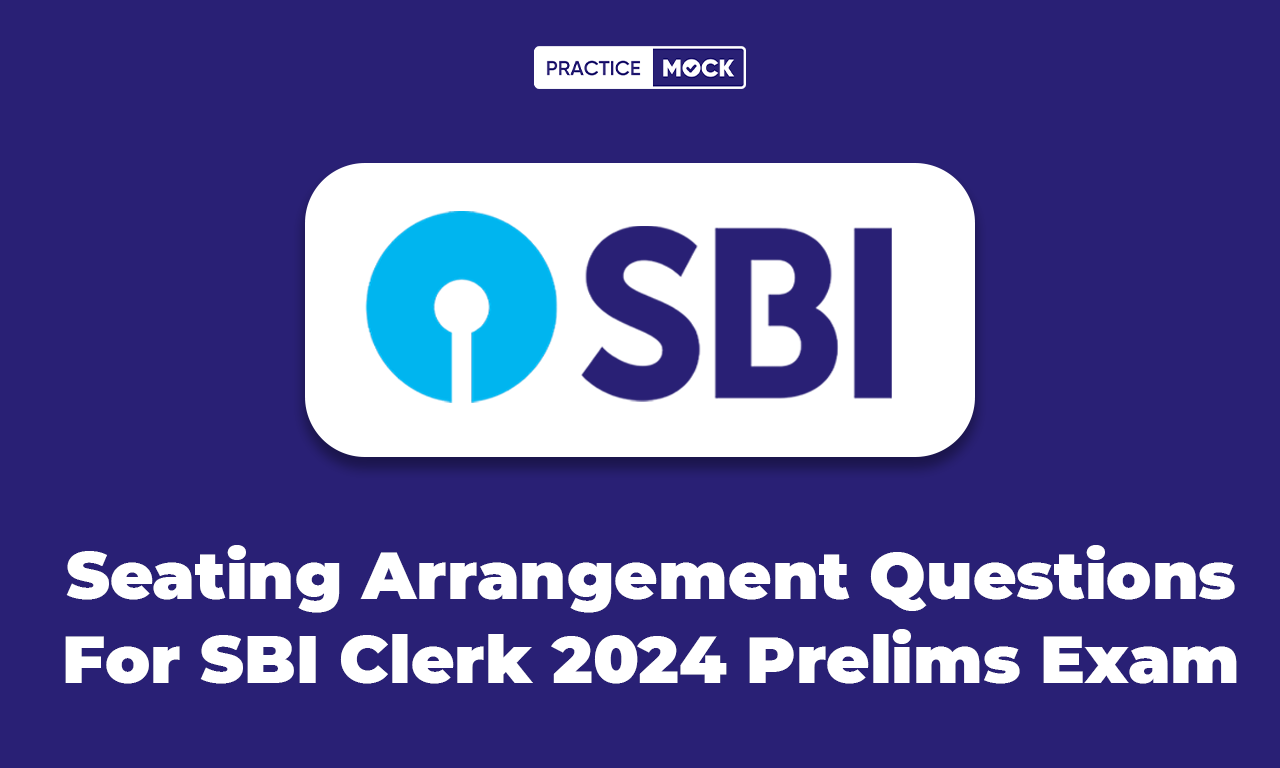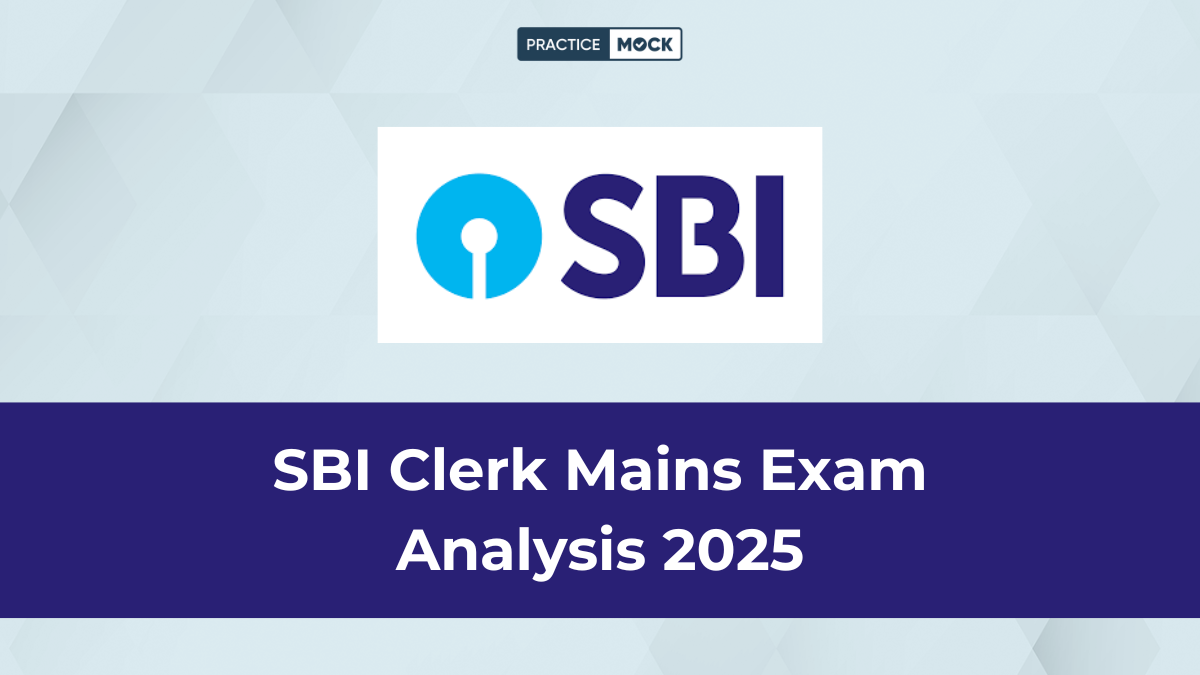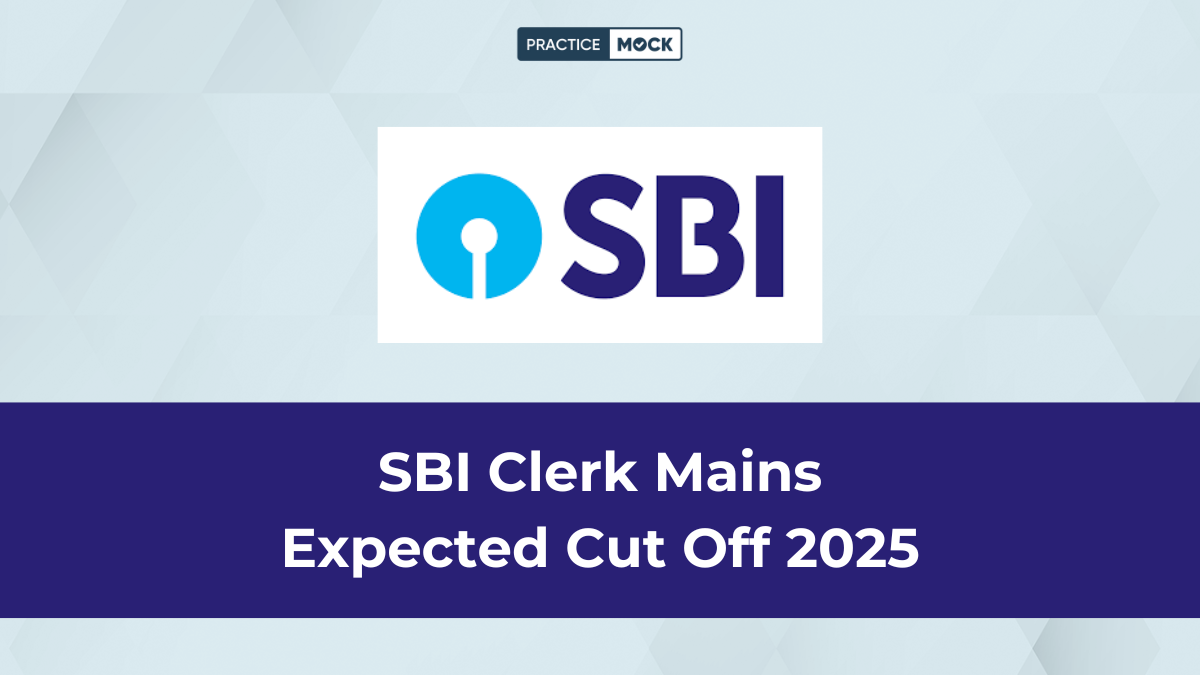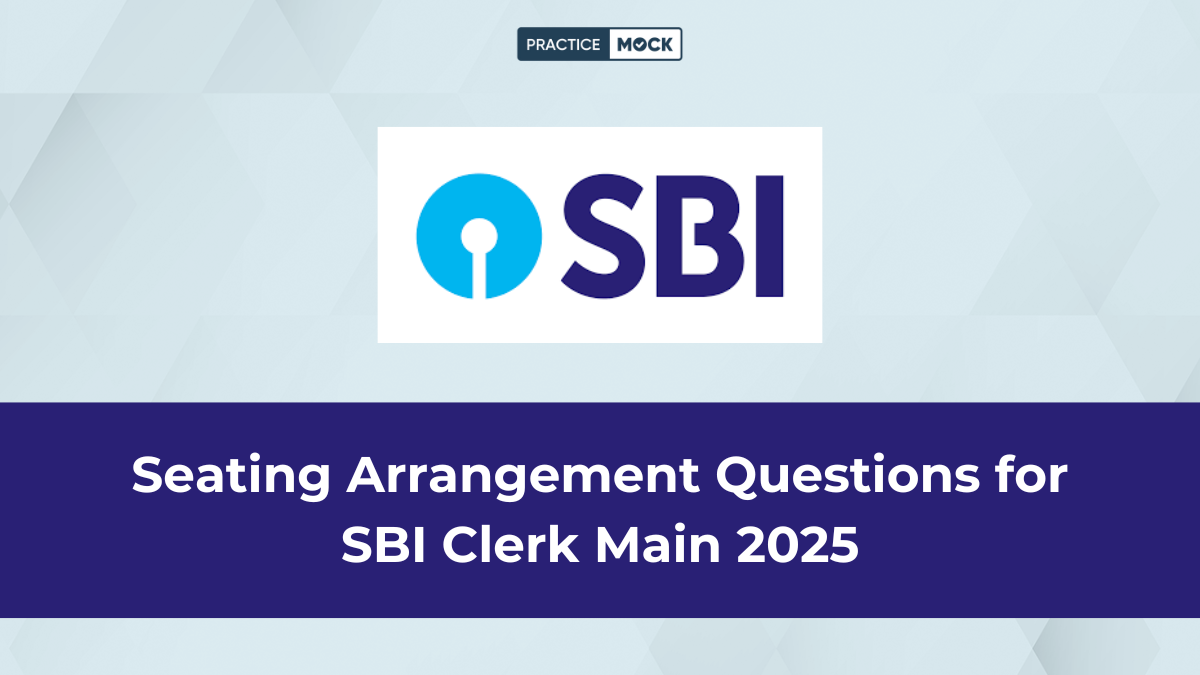Seating Arrangement Questions for SBI Clerk


Seating Arrangement for the SBI Clerk Exam: Seating arrangement is a very popular topic that is asked in many banking exams to check the thinking and logical ability of the candidates. This topic belongs to the reasoning section. For the SBI Clerk exam, candidates can expect at least 5-10 questions on this topic in the SBI Clerk exam. In this blog, we have provided some seating arrangement questions for the SBI Clerk 2024 prelims exam along with the answers and explanations. Also, we have provided some basic information about the topic. Candidates are advised to first understand the concept and then solve the questions.
Concept of Seating Arrangement
Seating Arrangement is an important topic in the Reasoning section of the SBI Clerk exam. It tests your ability to analyze and interpret information to determine the seating positions of individuals in a circular or linear arrangement.
Types of Seating Arrangements
- Linear Seating: In this seating arrangement, a straight line of people facing either towards or away from the center.
- Circular Seating: A circular arrangement of people facing either towards or away from the center.
Tips and Tricks
- Draw a diagram: First, understand the seating arrangement carefully by drawing a circle or line.
- Read the question carefully: Pay attention to the specific information provided and use that information smartly.
- Use arrow signs: Indicate the direction individuals are facing (towards or away from the center) using arrow signs.
- Practice: Regularly practice seating arrangement questions to improve your speed and accuracy.
SBI Clerk Free Reasoning Topic Tests & Other Links
Practicing sectional topic-wise mock tests is very important to analyze the weak areas deeply. The SBI Clerk prelims exam consists of three sections. Below we have provided all the topic-wise mock tests by which you can practice on all the sections systematically.
| Take a Free Mock Test & Know Your Current Preparation Level | SBI Clerk 2024 Free Mock Test |
| Take this test to master the English Section | SBI Clerk 2024 Free English Topic Test |
| Take this test to master the Quantitative Aptitude Section | SBI Clerk 2024 Free Quantitative Aptitude Topic Test |
| Take this test to master the Reasoning Section | SBI Clerk 2024 Free Reasoning Topic Test |
| Analyse Previous Year Papers through PYQs | SBI Clerk Previous Year Question Paper |
SBI Clerk Seating Arrangement Questions
Directions: Answer the questions based on the information given below.
Fourteen mobiles (A, B, C, D, E, F, G, P, Q, R, S, T, U, and V) are in two parallel rows equidistant from one another in a display case. Seven mobiles (A, B, C, D, E, F, and G) are in row 2 and seven mobiles (P, Q, R, S, T, U, and V) are in row 1. Mobiles in Row 1 is facing to the mobiles in Row 2 and vice-versa. Mobiles in Row-1 is facing the north.
U is 4th from the extreme left end of the row. Two mobiles are between U and V, which is opposite to A. Four mobiles are between A and B. P is opposite to C, which is adjacent to B. C is not at any extreme ends of the row. Two mobiles are between P and Q. Q is not 2nd from the extreme left end of the row. R, which is opposite to D, is adjacent to S. Neither E nor F is opposite to T. More than two mobiles are between D and E.
Starting Point: Start with placing U, V, A, and B as it can be placed at apt places tow form two cases initially.
Clues:
1. U is 4th from extreme left end of row.
2. Two mobiles are between U and V, which is opposite to A.
3. Four mobiles are between A and B.
Inferences:
From clue 1 and clue 2, we get V is either at extreme left or extreme right end of row 1.
From clue 3, we get B is 2nd from extreme right or left end or row 2.
Case I: When V is at extreme left end of row 1.
| Row 2 | A | B | |||||
| Row 1 | V | U |
Case II:When V is at extreme right end of row 1.
| Row 2 | B | A | |||||
| Row 1 | U | V |
Clues:
1. P is opposite to C, which is adjacent to B.
2. C is not at any extreme ends of row.
3. Two mobiles are between P and Q.
4. Q is not 2nd from extreme left end of row.
Inferences:
From clue 1 and clue 2, we get P is adjacent to U.
From clue 3 and clue 4, we reject Case I as we can’t place Q. Q is 2nd from extreme right end of row 1.
Case II:
| Row 2 | B | C | A | ||||
| Row 1 | P | U | Q | V |
Clues:
1. R, which is opposite to D, is adjacent to S.
2. Neither E nor F is opposite to T.
3. More than two mobiles are between D and E.
Inferences:
From clue 1, we get S is opposite to B. R is 1st from extreme left end of row 1. T is adjacent to U and Q.
From clue 2, we get G is opposite to T.
From clue 3, we get U is opposite to F. E is opposite to Q.
The final arrangement is as follows:
| Row 2 | D | B | C | F | G | E | A |
| Row 1 | R | S | P | U | T | Q | V |
Question 1: _____ is facing Q.
A) G
B) B
C) F
D) E
E) Cannot be determined
Question 2: How many mobiles are between B and G?
A) One
B) Two
C) Three
D) Four
E) Cannot be determined
Question 3: Which mobile is 3rd from extreme right end of row 1?
A) Q
B) P
C) S
D) R
E) None of the above
Question 4: As many mobiles are between U and S as between ____ and C.
A) B
B) E
C) A
D) F
E) G
Question 5: T is ____ from the extreme left end of row 1.
A) 6th
B) 7th
C) 5th
D) 3rd
E) None of the above
Related Blogs on SBI Clerk 2024 Exam
| SBI Clerk Notification | SBI Clerk Exam Pattern |
| SBI Clerk Syllabus | SBI Clerk Salary |
| SBI Clerk Cut Off | SBI Clerk Previous Year Question Paper |
| SBI Clerk Study Plan | SBI Clerk Preparation Strategy |
Seating Arrangement Questions For SBI Clerk: FAQs
Seating Arrangement is a topic that tests your ability to analyze and interpret information to determine the seating positions of individuals in a circular or linear arrangement.
Types of seating arrangement are Linear and Circular seating.
Read question carefully, make diagram as per the instruction, use arrow signs, understand the arrangement carefully and then answer the questions.
Yes, solving questions on seating arrangement is very important.
Recent Posts
IBSP RRB PO Quant Previous Year Question Paper, Download Free PDF
Here we are providing the IBPS RRB PO Quant Previous Year paper, Candidates can download…
Types of Question Asked in RRB Clerk Exam
In this article we've discussed the types of questions asked in RRB Clerk Exam that…
Finance & Management Preparation Strategy for Non-Finance Background Aspirants
Non-finance background? No problem! Discover simple and efficient strategies to master the Finance & Management…
UIIC Apprentice Recruitment 2025, Check Eligibility & Important Dates
In this article, we have discussed the details mentioned in the notification released by UIIC…
Idioms and Phrases for SSC CGL Exam, Check MCQ Quiz, Download Free PDF
In this blog, we have provided the Idioms and Phrases for SSC CGL Exam. Candidates…
RRB JE CBT 2 Cut Off 2025 Expected, Check Marks Calculator
In this blog, we have provided the details related to RRB JE CBT 2 Cut…



